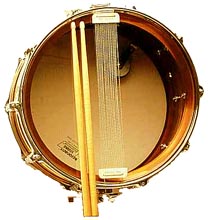DK Arts & Entertainment: Music
Music is the art of making sounds and arranging them in an entertaining way. People create and listen to music for pleasure, celebration, and to express ideas and feelings. Types of music include classical, folk, and pop.
Instruments generate sounds, as does the human voice. Some sounds with a specific PITCH are called notes. These sounds are then grouped to create RHYTHM and MELODY. Some music is created spontaneously, and some is composed over many years. Musicians compose alone and in groups.
Music can be memorized, written down, or recorded on to a medium such as CD. There are several systems for writing music. The most common is to create a score. A score is a page with a series of five-line grids called staves. Using notation (symbols), a composer writes the melody and rhythm of a piece of music.
Live performance takes place on stage in front of an audience. Although more people listen to recorded music (on CD, radio, and in clubs), watching the skill of musicians playing live together creates a great atmosphere.
The basis of all music is its beat, which divides it into units of time. Composers and musicians group these beats together, decide how long each beat is, and place accents on some for emphasis. This creates the basic rhythm of a piece of music.
The most basic rhythm is a group of two beats (1, 2) as in the act of walking or the sound of a heartbeat. Another basic rhythm is a group of three beats (1, 2, 3), as in a waltz. Both groups have the accent on the first beat. These two basic rhythms can be multiplied or combined to create more complex rhythms. A group of beats repeated in a regular rhythm is a bar.
Pitch is the height or depth of a particular note or sound. When two or more different notes are played at once, the sound produced is called harmony. Harmonies can change the mood of a piece of music, giving it a bright or a dark feel.
The pitch of a note depends on the speed its sound vibrates at: a fast speed of vibration produces a high note, a slow speed produces a low note. The rate of vibration per second is called the frequency of the note. In the West, concert pitch is the standard to which instruments are usually tuned for performance.
The arrangement of differently pitched notes one after the other creates a melody or tune. Simple melodies consist of just a few notes, but more complex ones are created using many different notes, rhythms, and harmonies. Good melodies tend to be catchy.
The world never seems to run out of new tunes, although echoes of one tune often turn up in another. There are only eight notes in the Western scale, but the way notes are combined into patterns and harmonies, and grouped into rhythms, creates countless melodies. Other cultures in the world have more complex scales that create even more melodies.

